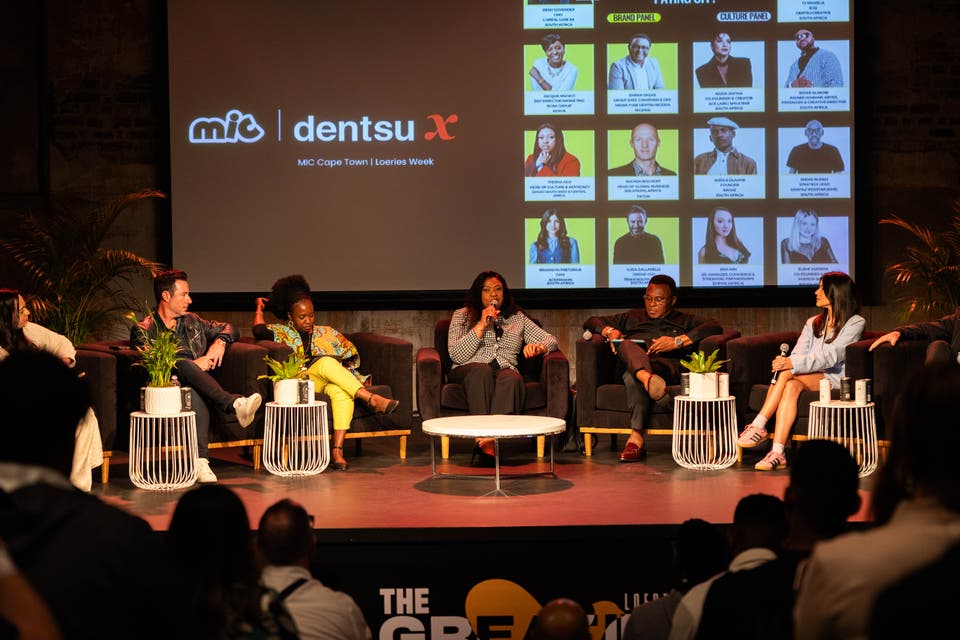
When ‘Maths Men’ (holders of data) and ‘Mad Men’ (the creatives) sit around a table, there are now an infinite number of possible narratives. Stefan Havenstein, Senior Software Developer at DDL, and Mitchell Collinson, Creative Director at Create Mozambique, take you inside their thinking
‘Maths Man’ – Stefan Havenstein

A few weeks ago, I took my good old Jolly Jumper for a ride along Noordhoek beach, together with Calamity Jane and a few other friends. It had rained a lot the days before – the ground was wet and deep, which should have been a warning to us all. We left the beach and went through the dunes, and were chatting about the good old days and how we caught The Daltons time and again when suddenly a sinking feeling got hold of me. As it turned out, I actually was sinking. Quicksand! Calamity was the fastest to think, and she hit Jumper’s butt with her whip so that he jumped boldly out of the pit before we could drown in the sand. She said: ‘You have to be more careful – he’s not the youngest any more.’
Well, this got me thinking – because neither am I. So, the following day I got myself an awesome life insurance from Rhino Inc.
Running our analytics and AI across 4 million entries of Rhino’s insurance data yielded a plethora of super-interesting insights, and I would have loved to explain all of them to the creative people in an hour-long meeting, using my best tables and charts, but usually I’m the only one still awake at the end of that kind of meeting. So this time I decided to try data storytelling: in contrast to spreadsheets and charts, stories inspire and engage people, and just like they help us make sense of the world despite its complexities and inconsistencies, they can help us make sense of an overwhelming amount of data and insights. They also force us, the data guys, to focus on the key points we want to make: in our case, the fact that people with horse insurance tend to be more interested in life insurance the older their horses get.
The narratives we use to explain the data are a means to communicate, not a product in itself, as opposed to the stories creative people tell. But we have another important input to these latter stories, and more specifically, their protagonists: just imagine for a moment you planned to run a multi-million rand, people-based online campaign targeting personas like Lucky Luke in the story above. The creatives are awesome, and all these people with old horses would be happy to buy the product – only that Dentsu Data Labs (DDL) now tells you there’s no way to target them online, because we don’t have audience data on them. Maybe there are just too few of them, maybe they prefer traditional channels, but in any case, this people-based campaign just lost its people. We, data and creative teams together, need to make sure that we have the data available to reach our audiences, i.e. precisely the people for whom the creative message is designed. From a data perspective, the most important way to guide this is the client’s first-party data.
If our creative and data people work together effectively, we can make ‘people-based marketing’ a reality for our clients, by driving the complete value chain from analysing the client’s customer data, enriching and transforming that into audiences that play perfectly with the agency’s narrative, to executing successful campaigns and feeding the campaigns’ learnings back into the chain for further optimisation.
‘Mad Man’ – Mitchell Collinson

All types of businesses are using creative analysis of data to establish competitive advantages. From big sports teams to behavioural analysis, and particularly advertising, combining data with creativity has been an interesting challenge.
Evidence of data-led creativity is all around us, from the way we experience films and TV to the way we listen to music. Technology provides us with valuable consumer data that we can interpret and analyse to come up with valuable insights. Data can influence creative decisions and provide valuable results by assessing whether creative ideas have had the desired effects.
Without any creativity, data-driven marketing is just numbers. Data is the raw material that needs to be transformed and then produced into something palpable. This transformation is where we find the most valuable insights. We need to analyse data strategically and creatively to gather the necessary insights to drive our ideas. Data gives us information, but the human connection comes from imagination and human intelligence: creative thinking. Sometimes data might not give us the true picture of engagement and conversion. A campaign can have great numbers but lack the emotional connection or relevance to build a long-lasting brand-consumer relationship. It takes the human perspective to identify cultural trends that we can tap into and create great creative work.
If everyone looks at the same data to shape strategy, everyone would arrive at the same answers. Here is where human relationships and cultural relevance become important. We need to come up with multiple strategies based on behavioural data, industry and cultural trends and find different approaches. From those insights we can focus on what’s really important: the idea.
Great creative work usually creates an emotional response, based on tone, language and cultural references. Storytelling, art direction and design can be important to create these emotional layers on every piece of communication. Recent studies concluded that ‘creative quality’ determines 75% of ad impact.
All the best ideas start with observation, and data is a new way of seeing the world. We need to create engaging stories based on the world we see. While data is important and analysing data can give us great insights that will drive our creative work, no machine can replace a creative thinker with big ideas. Creatives must embrace technology and ultimately take more creative risks, because it will amplify our work, but never replace it.


